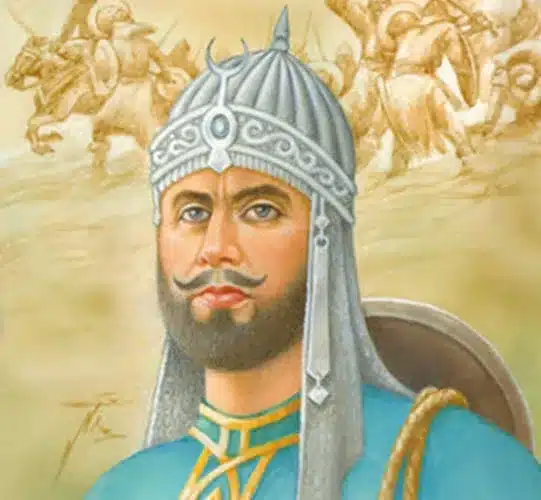Sher Shah Suri and Grand Trunk Road

Sher Shah Suri (1486 – 22 May 1545), born Farīd Khān, the founder of the Suri Empire in India, with its capital in Sasaram in modern-day Bihar. He introduced the currency of the rupee. Sher Shah of Sur took control of the Mughal Empire in 1540. After his death in 1545, his son Islam Shah became his successor.
In 1538, Sher Khan attacked Bengal and defeated Mahmud Shah. But he could not capture the kingdom because of the sudden expedition of Emperor Humayun. On 26 June 1539, Sher Khan faced Humayun in the Battle of Chausa and defeated him. Assuming the title Farīd al-Dīn Shēr Shah, he defeated Humayun once again at Kannauj in May 1540 and forced him out of India.
Sher Shah was a benevolent ruler and one of the greatest administrators in Indian history. His contributions have been noted down in history as revolutionary. He is well known for fostering trade and commerce, improving roads, and developing infrastructure in those times. During his Five-year rule from 1540 to 1545, he set up new economic and military administration. He issued the first Rupiya from “Tanka” and organized the postal system of the Indian Subcontinent. He set up a strong army and recruited soldiers directly. He made the dispensation of justice much fairer. His strategies were later idealized by Mughal Emperors like Akbar.
He extended the Grand Trunk Road from Chittagong in the frontiers of the province of Bengal in northeast India to Kabul in Afghanistan in the far northwest of the country. The Grand Trunk Road formerly known as Uttarapath, Sarak-e-Azam, Badshahi Sarak, Sarak-e-Sher Shah is one of Asia’s oldest and longest major roads. Fruit trees and shade trees were planted. At every 2 kos, a Sarai was built, the number of kos minars and baolis increased. Gardens were also built alongside some sections of the highway.
About Sher Shah Suri Tomb
The tomb of Sher Shah Suri is situated in Sasaram in Rohtas district of Bihar state in India. It is located on the Grand Trunk Road, which was built by him. It is an exquisite mausoleum that was built in memory of Emperor Sher Shah Suri, a Pathan from Bihar. Emperor Sher Shah Suri was a significant part of history as he had defeated the Mughal Empire and founded the Suri Empire in northern India in the 16th century. Apart from the historical significance, Sher Shah Suri has changed the architectural pattern in India as his monuments were unique for his time. He was also credited for the introduction of the postal service, and the current system of currency used in India.
Death
Sher Shah Suri was killed on 22 May 1545 during the blockade of Kalinjar fort in Bundelkhand against the Rajputs of Mahoba. When all of Sher Shah Suri’s tactics to conquer the fort had failed, he ordered the walls of the fort to be blown up with gunpowder. But he got seriously injured due to the explosion of a mine, and he passed away. The construction of the tomb had started when Sher Shah Suri was alive and continued in the reign of his son Islam Shah. Since his demise was so sudden and unforeseen, his son had to complete the construction of the uncompleted tomb. The construction was finally completed three months after his death. Sources say the tomb was built between 1540 and 1545. An inscription dates the completion date as 16th August 1545.
Observer Voice is the one stop site for National, International news, Sports, Editor’s Choice, Art/culture contents, Quotes and much more. We also cover historical contents. Historical contents includes World History, Indian History, and what happened today. The website also covers Entertainment across the India and World.
Follow Us on Twitter, Instagram, Facebook, & LinkedIn

